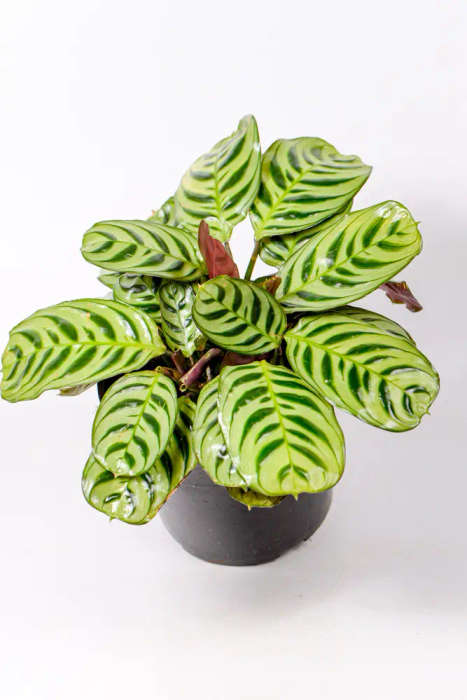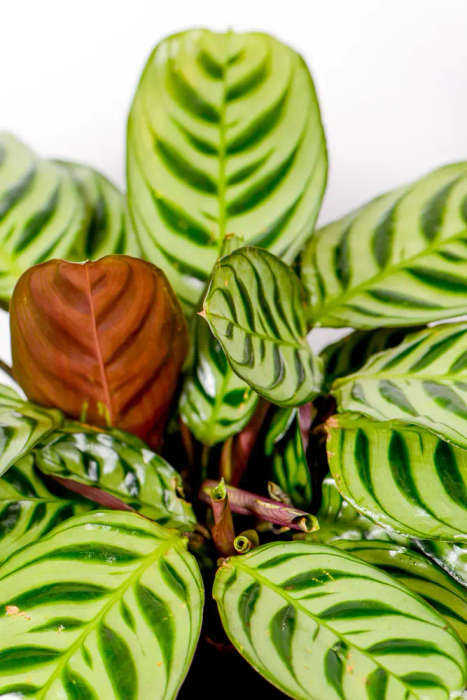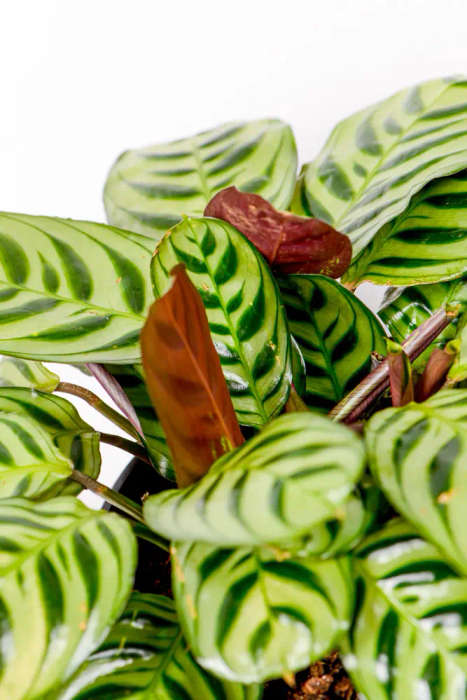







Calathea Burle Marxii
Check my rate
| Main centres: | 1-3 business days |
| Regional areas: | 3-4 business days |
| Remote areas: | 3-5 business days |








| Main centres: | 1-3 business days |
| Regional areas: | 3-4 business days |
| Remote areas: | 3-5 business days |
Calathea burle-marxii is a total show-off, in the best possible way. Its paddle-shaped leaves are patterned with bold fishbone stripes in alternating greens, and the undersides flash deep burgundy when the light hits just right. Whether on a shelf or centre stage, this one brings serious drama to your indoor collectionno flowers needed.
Pot size 14cm
Botanical name: Calathea burle-marxii
Commonly known as: Fishbone Calathea
Named after the legendary Brazilian landscape architect Roberto Burle Marx, this Calathea is just as creative. The foliage features striking patterns that resemble a fish skeletonalternating dark and light green along a central vein. Flip the leaves over and you'll see that classic calathea pop of purple on the undersides. It's compact, lush, and moves gently with the light throughout the day.
Calatheas can have a bit of a diva reputation, but burle-marxii is one of the more forgiving types. Keep the humidity up, avoid cold draughts, and you'll have a tropical beauty that holds its form and colour all year round.
Light requirements:
Bright, indirect light is ideal. It can handle lower light too, but the patterns may fade a little. Avoid direct sunlightit'll bleach and crisp those lovely leaves.
💧 Watering:
Keep the soil evenly moist, but never soggy. Water when the top 23cm of soil is dry, and use rainwater or filtered water if possible. Tap water with chlorine can cause browning tips.
🌡 Humidity & Temperature:
These plants love humidity. If your home is dry, consider a pebble tray or humidifier. Aim for over 50% humidity and keep temps between 1826°C. It won't appreciate draughts or sudden temperature dips.
🪴 Potting mix:
For optimal drainage and healthy roots, you can use our premixed Aroid Mix, or you can create your own potting mix using Barks Unlimited Potting Soil combined with Perlite and a few Bark Chips. Repot every 12 years to refresh the mix and give roots room to grow.
🌱 Feeding:
Feed monthly in spring and summer with a controlled release fertiliser or a gentle organic fertiliser. Ease off during winter.
🐛 Pests & Problems:
Spider mites can be a problem in dry conditions. Keep leaves clean and check the undersides regularly. If pests pop up, treat early with insecticidal spray and improve airflow.
Pruning & propagation:
Trim off older leaves at the base if they yellow. This plant is usually propagated by division, best done when repotting in spring.
Be sure to visit and follow us and




